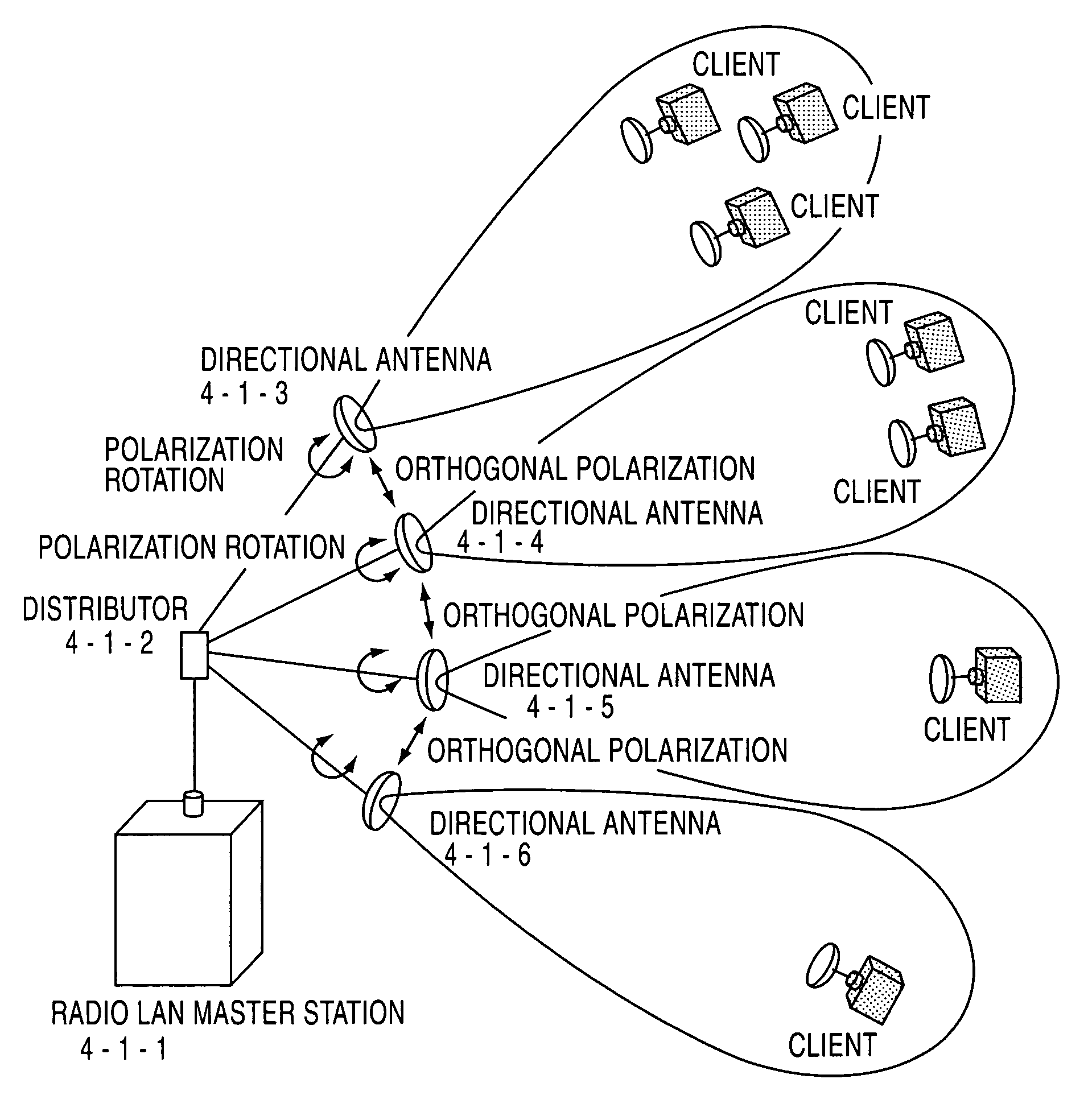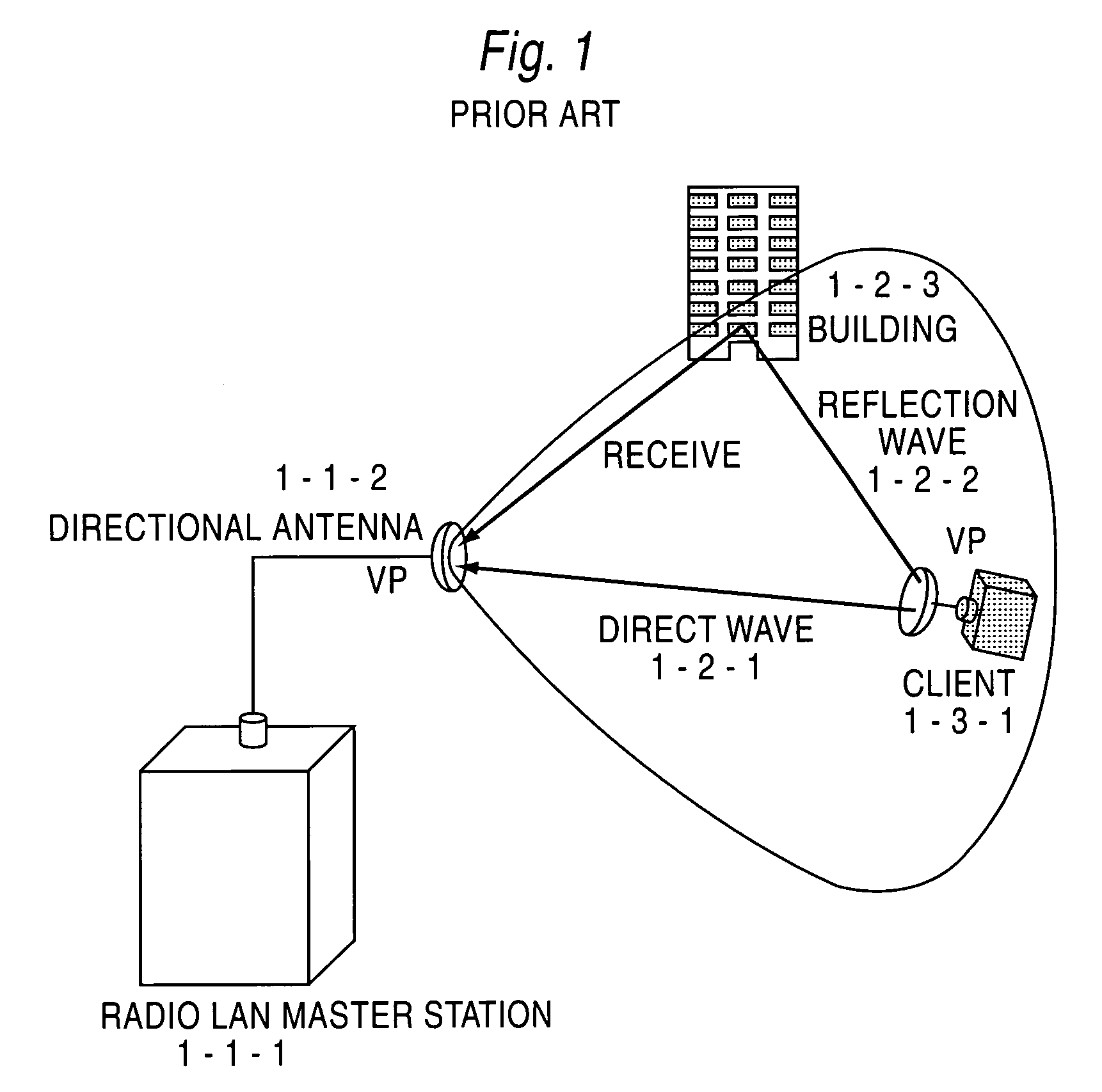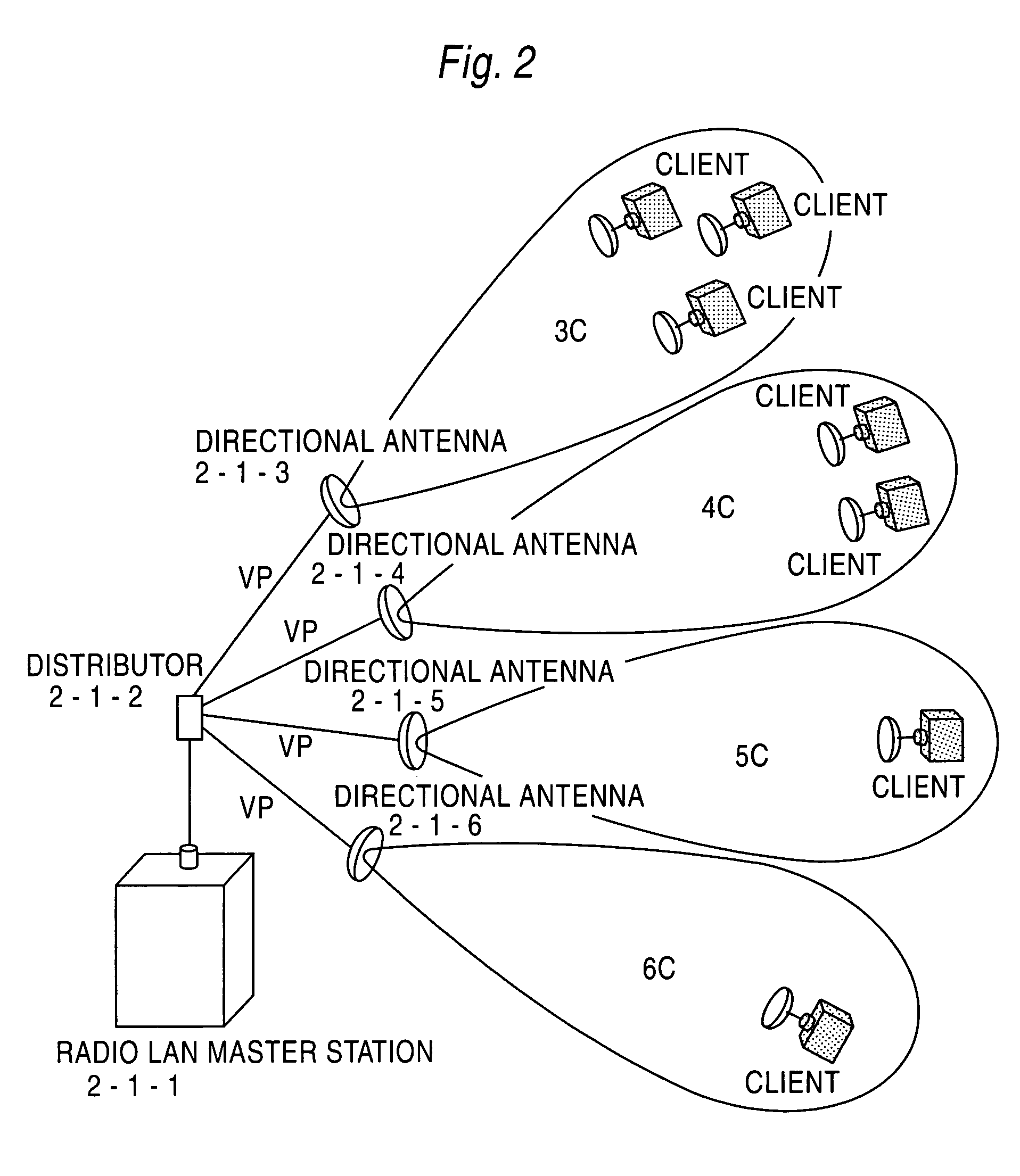Radio LAN master station system
a master station and radio lan technology, applied in the field of local area network radio lan master station system, can solve the problems of high interference rate, poor communication quality, and inability to use such frequency band systems, and achieve the effect of long distance communication
- Summary
- Abstract
- Description
- Claims
- Application Information
AI Technical Summary
Benefits of technology
Problems solved by technology
Method used
Image
Examples
first embodiment
[0029]FIG. 2 shows the arrangement of a radio LAN master station according to the present invention. A master station 2-1-1 is coupled with a plurality of directional antennas 2-1-3, 2-1-4, 2-1-5 and 2-1-6 through a power distributor 2-1-2, so that radio cells 3c–6c are provided, relating to each of the directional antennas. Each of the antennas 2-1-3 through 2-1-6 are directed to a specific cell, and a client terminal is located in each cell. In one embodiment, a radiowave emitted by each of the antennas has the common polarization, for instance, vertical polarization. The arrangement of FIG. 2 has an advantage that a long distance communication is possible, because the service area is divided into a plurality of cells and an antenna is a directional antenna illuminating only a small cell and having large gain, although the arrangement of FIG. 1 does not have such an advantage. Further, the arrangement of FIG. 2 has an advantage that undesired interference is decreased, since no be...
second embodiment
[0030]FIG. 3 shows the arrangement of a radio LAN master station according to the present invention. The arrangement of FIG. 3 has an advantage that a multi-path wave emitted by a client terminal 3-3-1 directed to one of the directional antennas but reflected by an undesirable reflection body such as a building 3-2-3, provides less interference to an adjacent antenna. A master station 3-1-1 is coupled with a plurality of directional antennas 3-1-3, 3-1-4, 3-1-5 and 3-1-6 through a power distributor 3-1-2. The arrangement of FIG. 3 is a modification of FIG. 2, and antennas in FIG. 3 use vertical polarization and horizontal polarization alternately in angular direction, so that antennas 3-1-3 and 3-1-5 use vertical polarization, and antennas 3-1-4 and 3-1-6 use horizontal polarization. A radio wave 3-2-1 emitted by a client terminal 3-3-1 in a vertical polarization is received by an antenna 3-1-5 as a direct wave, and said radio wave is further reflected by a building 3-2-3 as a refle...
third embodiment
[0031]FIG. 4 shows the arrangement of a radio LAN master station according to the present invention. The embodiment of FIG. 4 is the modification of FIG. 3, and intends to remove interference by other systems which can not remove by simple alternate arrangement of polarization as shown in FIG. 3. A master station 4-1-1 is coupled to a plurality of directional antennas 4-1-3, 4-1-4, 4-1-5 and 4-1-6 through power distributor 4-1-2. The embodiment of FIG. 4 has the feature that antennas 4-1-3, 4-1-4, 4-1-5 and 4-1-6 are not a strict vertical antenna, nor a strict horizontal antenna, but polarization plane of each antenna is rotated from vertical plane or horizontal plane, so that two adjacent antennas have polarizations in orthogonal relations with each other. The resultant polarization plane is fixed when the interference becomes the minimum.
[0032]The polarization plane which provides the minimum interference is determined as follows. First, the antenna which has the largest interfere...
PUM
 Login to View More
Login to View More Abstract
Description
Claims
Application Information
 Login to View More
Login to View More - R&D
- Intellectual Property
- Life Sciences
- Materials
- Tech Scout
- Unparalleled Data Quality
- Higher Quality Content
- 60% Fewer Hallucinations
Browse by: Latest US Patents, China's latest patents, Technical Efficacy Thesaurus, Application Domain, Technology Topic, Popular Technical Reports.
© 2025 PatSnap. All rights reserved.Legal|Privacy policy|Modern Slavery Act Transparency Statement|Sitemap|About US| Contact US: help@patsnap.com



